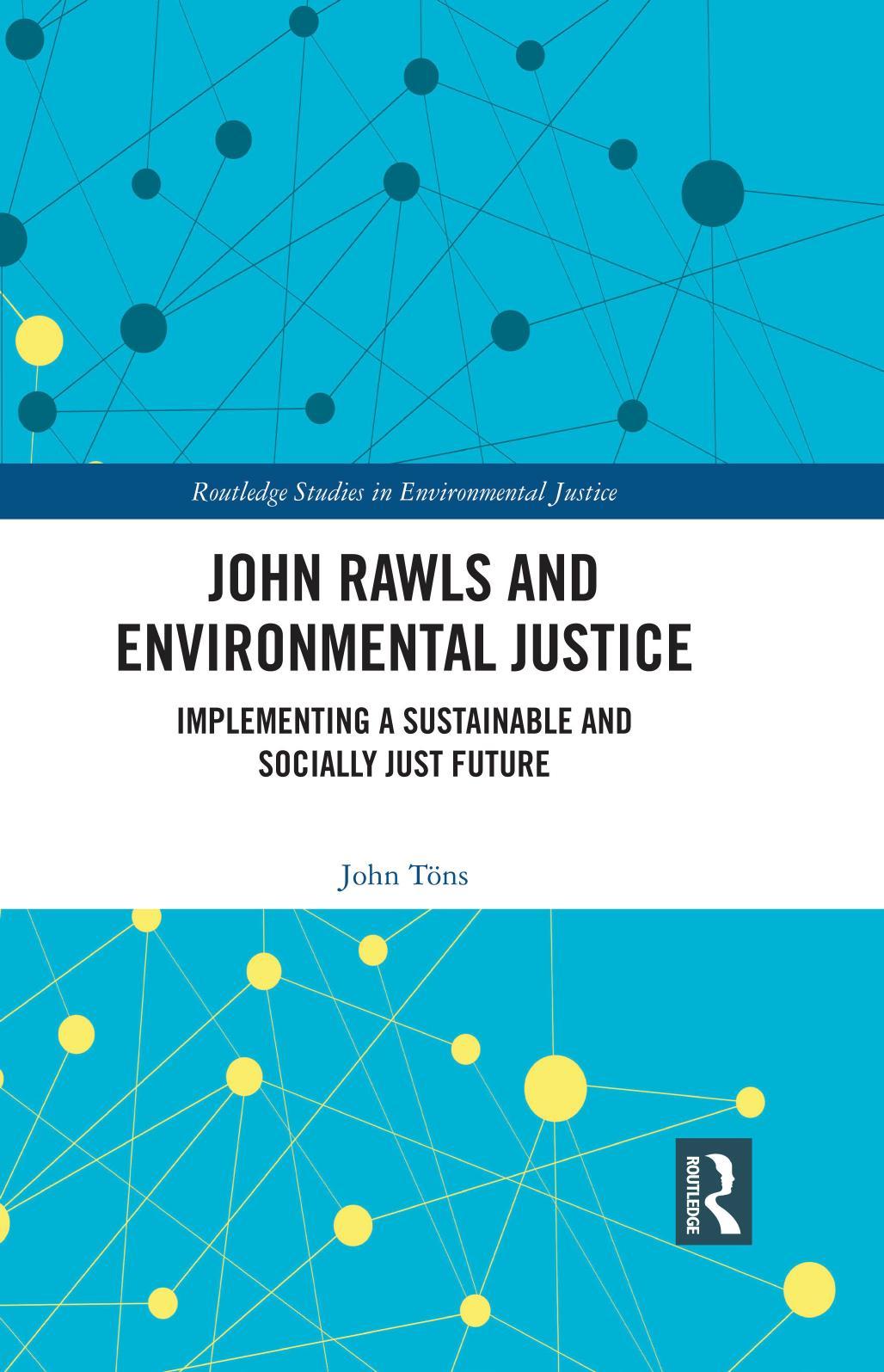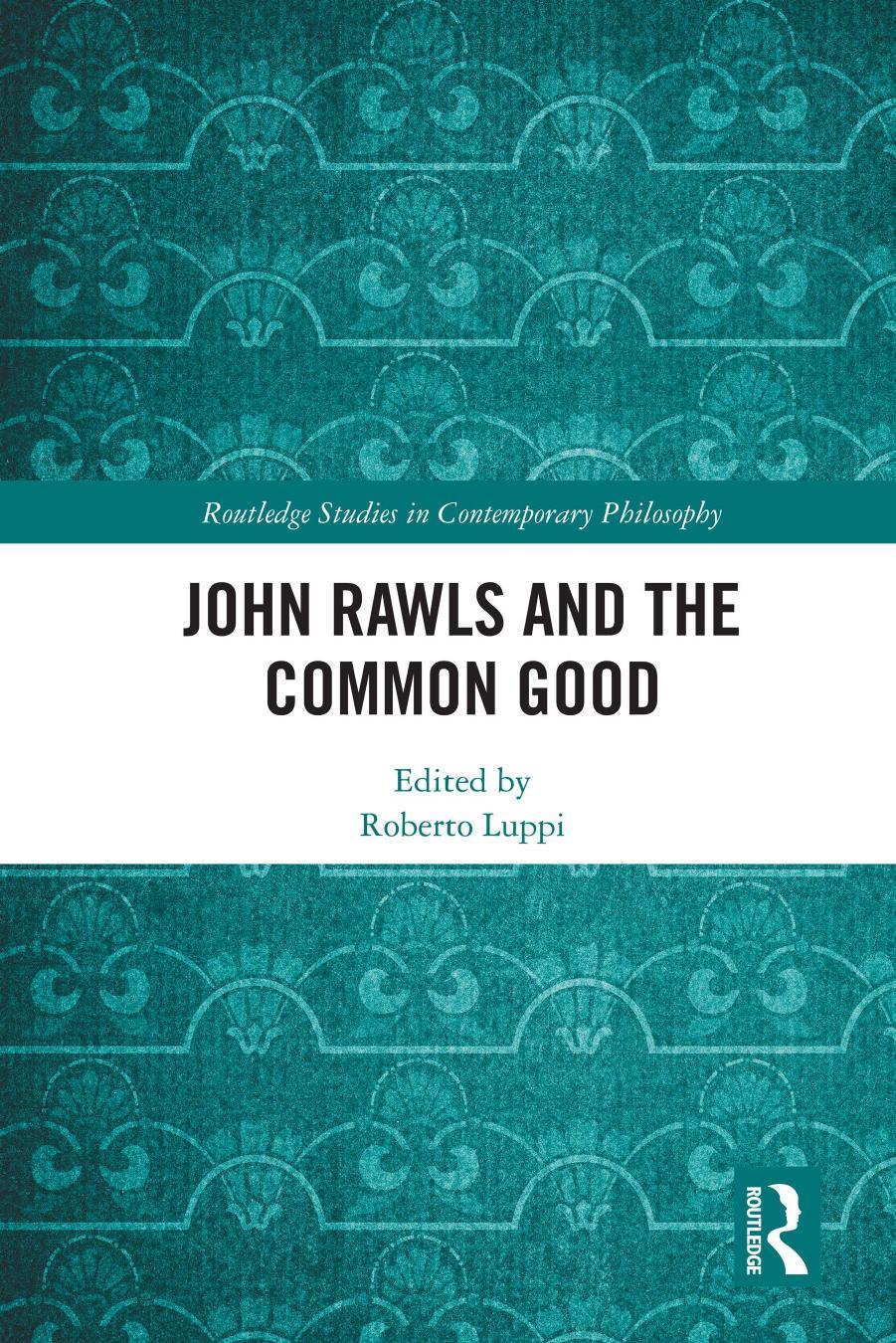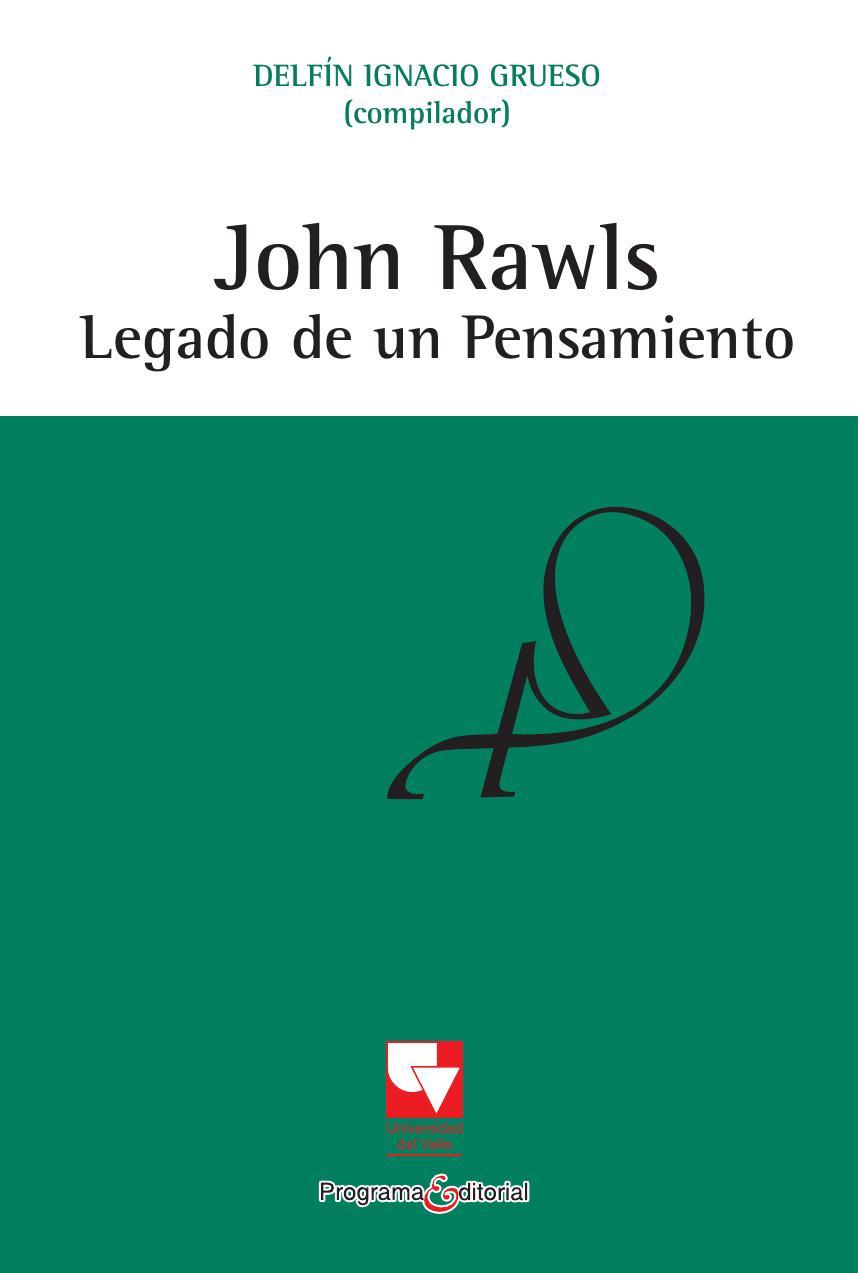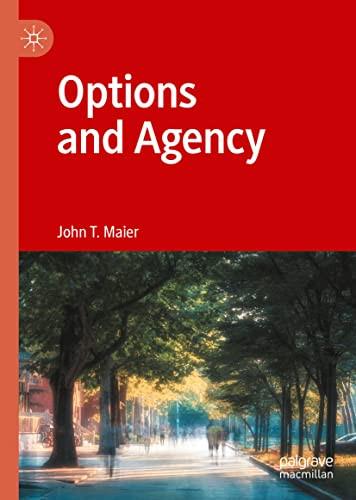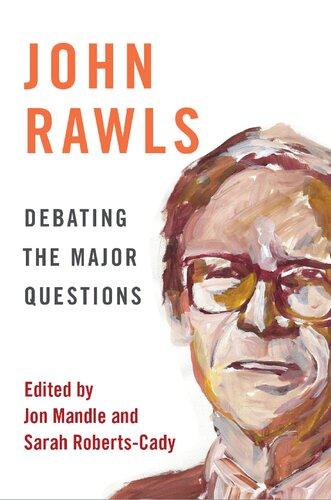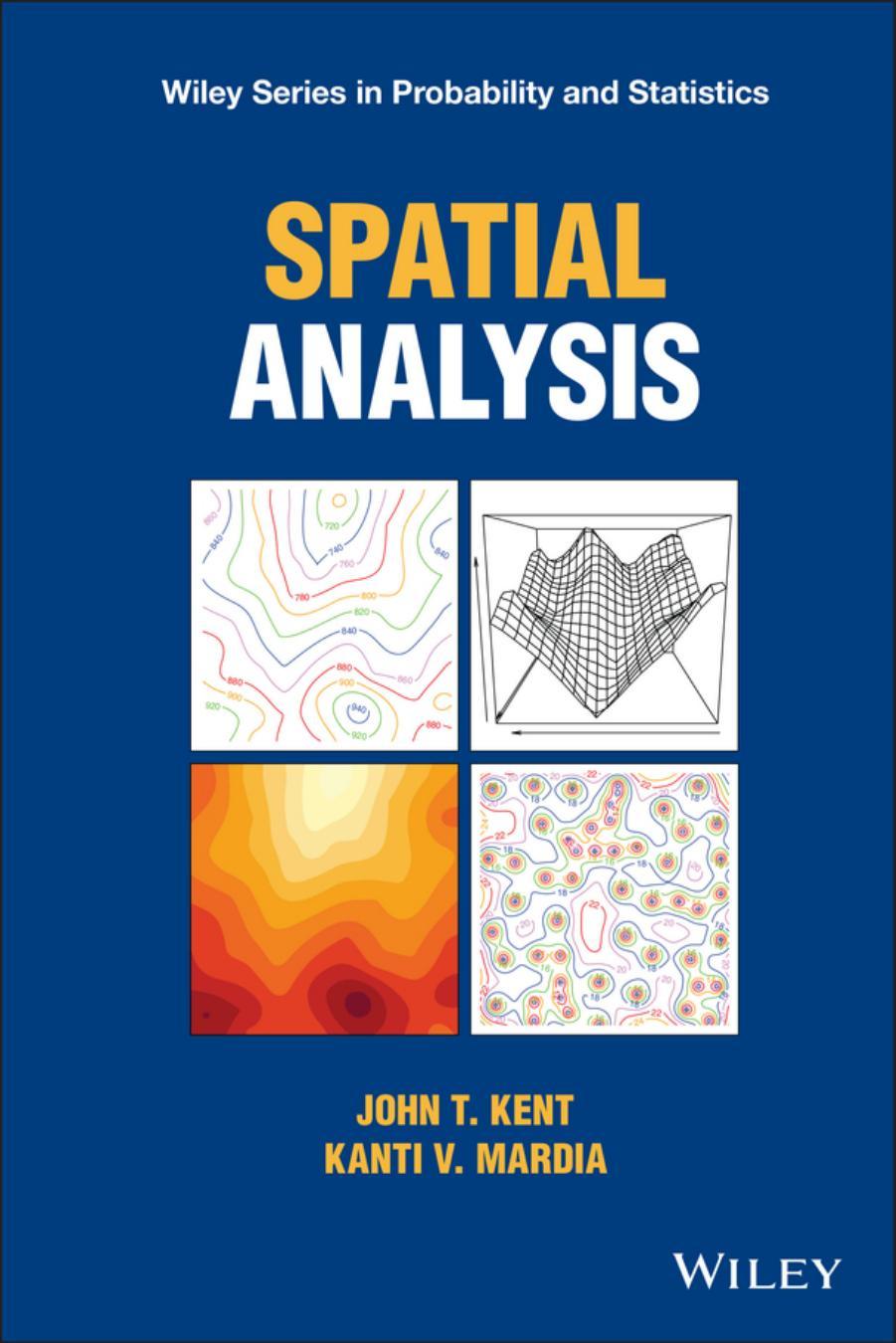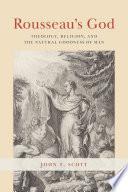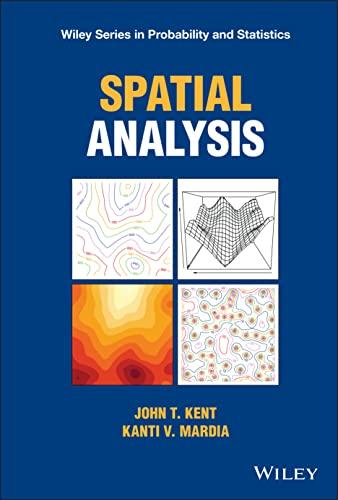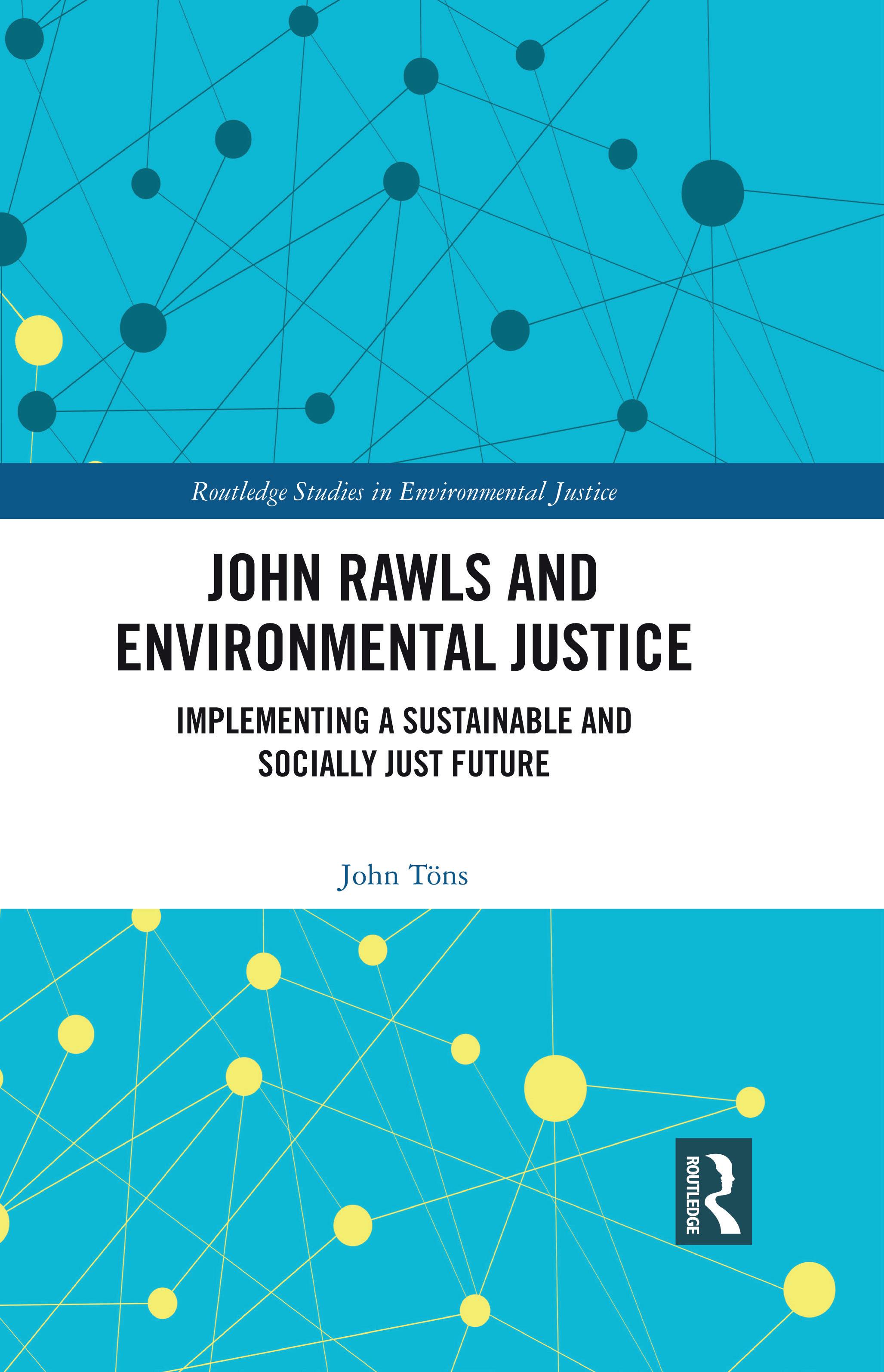Introduction
We are at a critical turning point in the history of human life on earth. It may be plausibly asserted that we are facing a global existential crisis. The nature of that crisis is a product of a growing awareness that ‘… we are not just billions of individuals and millions of collectivities but a single species alongside other species one whose survival is threatened by its own behaviour’ [1]. Rawls’s theory of justice argues that our behaviour is shaped by the institutions that we have created. If we want to change the future, then we need to critically scrutinize our institutions. This means we need to question the assumptions on which our confidence in our institutions is based.
The global experience of Covid-19, for a moment, demonstrated what sort of world we could be living in. As the world entered lockdown traffic came to a halt. We could hear the birds sing, the air became clear, and we could breathe freely. Many people started working from home. Unshackled from the daily commute they reclaimed some of their life. For the first time technology seemed to be delivering on its promise of creating a better life for all of us.
But there is also an ugly side to Covid. It laid bare the weaknesses of capitalism. There were the few who did well out of Covid. In the United States the pandemic profits made by billionaires could cover the almost $2 trillion cost of the pandemic [ 2 ]. The opioid crisis in the United States had demonstrated big pharma’s pre- occupation with profits over public health [ 3 ]. The world’s need for a vaccine created a swag of new billionaires. The world equivocated over intellectual property rights whilst the windfall profits from the vaccines could have covered the cost of vaccinating the world’s poorest countries [ 4 ]. The Covid experience was an echo of the occupy movement from 2012:
Allow us to introduce ourselves:
We are the 99 percent.
We are getting kicked out of our homes.
We are forced to choose between groceries and rent.
We are denied quality medical care.
We are suffering from environmental pollution.
We are working long hours for little pay and no rights, if we are working at all.
We are getting nothing while the other 1 percent is getting everything. We are the 99 percent [5].
The Covid pandemic gave many people a taste of what had been the lived experience of many of their fellow citizens. Covid exposed the fundamental unfairness of our institutions.
If it is the case that our institutions have shaped our behaviour, then if we want to create a socially just and sustainable future then Rawls’s Theory of Justice is a possible starting point. The premise of his theory is that
The primary subject of justice is the basic structure of society, or more exactly, the way in which the major social institutions distribute fundamental rights and duties and determine the division of advantages from social cooperation.
(TJ, p. 6)
We are responsible for the institutions we have created. If we want to avert the environmental threats we face we need to be the architects of our success. That means we need to either reform or abolish our institutions if they are unable to deliver both a socially just and sustainable future.
But it is not just our institutions that need to change. It is also our ontology and that may well be an even harder task than changing our institutions. The idea that there may be a problem with our existing ontology is a controversial debate. Part of the reason is that it sends philosophy in a new direction; it challenges our fundamental beliefs about the world and our relationship to that world [6]. Anthropologists have begun to realise that their existing ontological framework struggles to cope with the myriad of contradictions that their research is showing up [7]. To fully engage in this debate would require a book of its own. It touches on one of the oldest questions in philosophy: what is our relationship to the world that we inhabit [8, 9]? For the purposes of this discussion I will assume an ontology that places the web of life at its centre. Such an ontology will shift the focus from a pre-occupation with humanity to one that focuses on the environment. Such a focus will enable us to make decisions that will yield achievable, realistic outcomes [10].
The challenge of understanding our world is not unlike being on an archaeological dig. Philosophers dig into the past; we revisit the insights that philosophers have had about the nature of the world and our relationship to that world. It can be a humbling experience, for it seems that the questions that we are asking today are really no different from the questions we have always been asking. We like to imagine that there is something unique about living in the 21st century but in reality there is not. What has happened is that the chickens have come home to roost. For much of human existence we have been content to understand our immediate surroundings. What happened in
3 distant lands was of little concern to us. Covid-19 has brought home what was previously an abstract reality – we are part of the web of life. Our local actions can have a global impact.
The film Minamata provides us with an insight into how our current ontology is inimical to the environment [11].The film recounts how the people of Minamata suffered from what came to be called the Minamata disease. The disease was caused by the release of methylmercury in the industrial wastewater from a chemical factory owned by the Chisso Corporation. That wastewater was discharged directly into the bay, where it entered the food chain. Minamata was a fishing village; its residents lived off the fish and shellfish caught in the bay – fish and shellfish heavily contaminated by mercury.1 The film centres on the work of W Eugene Smith, a photo journalist whose photographs drew worldwide attention to Minamata. Although Smith was working in Minamato in 1971 Executives at Chisso had been aware that effluent from their factory was causing the mercury poisoning from as early as the late 1950s. Their lack of action is explained in what may be described as a utilitarian response. The CEO2 of Chisso pointed out that the products Chisso was producing did tremendous good in the world and so if the lives of the local villagers were blighted on the whole the calculus of good was in favour of the factory. The second line of defence offered was that if they fully compensated the villagers then it would drive them into bankruptcy and the whole Japanese economy would suffer. Both these defences highlight firstly an ontology where the good of humanity trumps all other considerations and secondly that this ontology is ultimately not in our interests, for there is no economy, no future for humanity on a dead planet.
If Minamota was an isolated example, then it could easily be dismissed but it is not. Nor do we have to look far for examples. An industrial plant in Bhopal created a local environmental disaster as with Minamoto the victims have received barely adequate compensation [13]. Even though the risks to pregnant women in taking Thalidomide were well known the company continued to sell its products [14]. We have known the dangers of using asbestos for many years the victims have had difficulty getting compensation [15]. We know only too well the story of Tobacco induced cancers, yet tobacco companies continue to sell their products [16]. Teflon is still widely used, yet its dangers to our health are well known [17]. An internet search will show that these examples are far from isolated [18]. But they all have something in common – they represent a failure of our institutions to protect our health and well-being.
Rawls and environmental justice
For some Rawls’s Theory of Justice may, on the face of it seem to be an unlikely candidate to address this problem. We are dealing with global issues, but Rawls rejected cosmopolitanism (LOP, p. 116). There is every indication that we need to face the reality that to create a viable long-term future for ourselves we will need to do with less [19], but Rawls’s concept of distributive justice is
still predicated on the assumption that we live in a world of moderate scarcity. Rawls could justifiably be regarded as being concerned only with the relations that humans have with one another – responsibility for the non-human world does not rate a mention. So why should we persist with a Rawlsian approach? The reason is that the challenges we face are largely a product of our making. If we accept that responsibility, then it is up to us to make the necessary changes. Rawls described justice as the first virtue of social institutions. His theory of justice is based on ‘the principles that free and rational persons concerned to further their own interests would accept’. There is a growing awareness that in considering our own interests we need to address the challenge of the environmental crisis. It can be that the environmental crisis has pitched us in the centre of a ‘perfect moral storm’ [20]. Key features of that storm are asymmetries of power. The world’s most affluent nations have the power to make changes but is it rational for them to make changes that may not be in their interests? Secondly, many of the problems that we are facing will impact future generations; how could it be in our interest to make changes that will impact future generations? But by far the main challenge that we face is that we do not have a robust political theory to guide us – it is this gap that this book seeks to address.
The argument in support of applying Rawlsian justice to the current crisis is based on the premise that a sustainable and socially just future cannot be built on inequality [21]. Attempts to isolate environmental questions from broader questions of social justice will result in ultimately self-defeating solutions [22]. The second premise is that a sustainable and socially just society will need to be a resilient society. I will be arguing that a just society will be one where everyone is treated fairly, for such a society will have the resilience to cope with the unexpected. It is my contention that Rawls’s Theory of Justice provides a normative rationale whereby we can cooperate to achieve a socially just world [23]. In his original article, namely ‘Justice as fairness’, Rawls laid the foundations for a theory of justice that has the ability to address the challenges that we face [24]. Whilst I will be drawing on Rawls’s philosophy, it is important to stress from the outset that no political philosophy is ever complete; it is always a step on the way to a better understanding of what makes for a just society. The challenges that Rawls confronted in his 1958 essay are different from the challenges we confront in 2021. What this means is that in developing a sustainable and socially just future we need to critically engage with Rawls’s Theory of Justice. In so doing we need to heed Rawls’s own words:
In a democratic society …political philosophy has no authority at all… political philosophy… is always the joint work of writers and their readers. (LHPP, p. 2)
In critically examining Rawls’s theory I am engaging in that joint enterprise and in reading this book, you too are engaging in that joint enterprise.
The joint enterprise
As a political philosopher it is not unusual to be accused that your theory may be sound but what you are asserting is simply not the way the real world is. On 20 December 2019, the real world intruded on my theory, for as I worked on a draft of this book I was interrupted by a bushfire. As we were right in the path of the fire we had to evacuate. We returned home to find that whilst many friends and neighbours had lost their houses; the fire had stopped a mere 500 metres from our boundary. A week later we again had to evacuate; once again the bushfire was threatening our home.
We entered 2020 – the book forgotten; there were different priorities. The fire had turned strangers into acquaintances, acquaintances into friends. We built on these new relationships by organizing activities to support one another. In meeting after meeting, we explored what resilience meant for our community, how we could ensure that we are better prepared for future disasters and above all what we need to put in place so that we can respond quickly to the needs of our community. But again, in March 2020 nature intervened; Covid19 put our bushfire recovery programme on hold.
Although Covid’s intervention slowed down our recovery programme it forced us to focus on what it meant to create a resilient community. It gave us the luxury of reflection, something that is rare for people impacted by disaster. In general, the response to a disaster is to restore the status quo. But that is not always the case. Klein documents ‘disaster capitalism’ [25]; the disaster presents an opportunity to implement policies that would, under normal circumstances, be resisted. Milton Friedman opined: ‘Only a crisis – actual or perceived-produces real change. When that crisis occurs, the actions that are taken depend on the ideas that are lying around’ [26]. If the ideas of the Chicago School of Economics are the only ones lying about then they will be readily embraced, for they seem to offer a well thought out constructive way to respond to the crisis. The tragedy is that the solution served to create what Adams has referred to as Chronic Disaster Syndrome – where alienation becomes a way of life:
New Orleans points not to the failure of a particular set of policies but, rather, to the success of these policies in achieving other goals pertaining to the growth of the private sector and debilitation of the public sector, the erasure and eradication of the poor, and the rendering invisible of the true recovery needs of communities post disaster. In the wake of such successes, we witness the trauma of lost lives, families, and cities.
[27]
Covid gave us something that the survivors of Hurricanes Katrina did not have: the time to pause, reflect and share possible solutions. The responses by bushfire- impacted communities were both identical and very different. The responses followed a very similar path to those that
communities developed in the wake of the Victorian Fires [28 ]. They also bore more than a passing resemblance to Ostrom’s research on governing the commons [ 29 ]. Our many small communities came up with their own responses but in every instance responses centred on the idea that the community needed to be assisted in retaining control of disaster management. They also confirmed Binmore’s idea that successful normative theories are grounded in drawing upon the rules we instinctively apply. Those rules have evolved over time in response to the need to manage our environment. They are based on the common understandings that allow us to coordinate our efforts [ 30 ]. The need for us to develop a coordinated response both to the bushfires and then Covid meant that we needed to review why existing responses failed in the face of these disasters. We learnt that when it came to bushfires we needed to rely on our own resources; however, when it came to Covid we needed the advice and support from both the state and national governments.
The response of the set of communities that were impacted by the 2019–2020 bushfires in Australia suggested that each community was focused on their immediate surroundings.3 The challenge became how to create the social structures to enable people to support one another in the case of disasters. In the face of a natural disaster be it floods or fires, earthquakes, or pandemics, we can see that nature is indifferent to our human conventions. The oft-repeated aphorism during the global pandemic has been ‘we are all in this together’ is also a shorthand way of describing what resilience means.
The idea that ‘we are all in this together’ has implications for resilience. The effectiveness of the decisions my local community has made about becoming more resilient is dependent not just on our own efforts but on a wide range of other actors. Effective governance will mean that all tiers of government are involved. But it is not just confined to elected governments; globalization has meant that we need to take account of a global network of actors who help shape the political narrative [32]. That global network means that we are susceptible to what Goldin has called the butterfly defect; Goldin warned us that ‘The many networks and mechanisms on which global integration relies cannot be allowed to outgrow the capacities of their governing institutions’ [33, p. 199]. The 2020 encounter with disasters alerted most people to our vulnerability, to the lack of inbuilt redundancy in our social systems. We have encountered firsthand the reality that the boundaries between human-engineered disasters and natural disasters have become blurred.
The small community of which I am a part came together without having read Rawls; they recognized that survival was a joint enterprise. Unwittingly they subscribed to an ontology that recognized the primacy of the environment. Discussions are ongoing – I do not know where those discussions will finally land. There is the possibility that once the immediate threat is past we will drop back into our familiar comfort zone, until the next disaster once again shakes us out of our complaceny.
Our short memories
We can argue that many of the global disasters that characterised 2020 are a product of public policies. Both in social media and mainstream media it was hard to escape any story dealing with the impact of Covid-19 that did not refer to it as being ‘unprecedented’. It invited the idea that because covid was unprecedented there was nothing that could have been done to prevent it.Thus ‘unprecedented’ became shorthand for unforeseen. But it could and should have been foreseen. On January 2020 an editorial in the New England Journal of Medicine stated: ‘for the third time in as many decades a zoonotic coronavirus has crossed species to infect human populations’ [34]. In 1957 Martin provided an overview of the history of the risks to human health from our association with animals [35]. By 2012 The Lancet summarized the challenges posed by zoonotic infections identified a set of seven challenges that demonstrate the interplay between the natural and the human world [36].
We ignored the warnings that zoonotic diseases are part of the natural world. We ignored the advice that their impact could be minimized or avoided. One of the reasons that there is increased frequency in the incidence of pandemics is that it is the price we pay for development.
But it is not just Covid. Bushfires have been part of Australia’s history. Yet every bushfire season we are strangely underprepared. Parts of the UK are susceptible to floods, yet every year when there are floods decisions are made to protect the population but the good intentions are seldom implemented.
If we ask the question: why did Covid-19 hit the world so hard? We can see at a glance why we seem incapable of learning from the past. The WHO had the policies and strategies in place to cope with a pandemic [37]. However, public health considerations are also political considerations. As early as January 2020 the WHO advised ‘all countries should be prepared for containment, including active surveillance, early detection, isolation and case management, contact tracing and prevention of onward spread’ [38]. By no means all countries heeded that advice. The reasons varied but politicians needed to assess the costs associated with seeking to stop the pandemic in its tracks. In many countries there was just not the willingness to pay that price.
The result has been that there is an ongoing tension between the priorities of politics: ensuring that the economy continues to function and the priorities of public health to stop the virus in its tracks. That tension has helped shape the nature of the response to the virus. It is too early to determine how that tension will be resolved:
The COVID-19 pandemic could encourage people to realize that they all depend on each other on this small planet and, whether it is global heating, inequality, or environmental degradation, will either swim or sink together. On the other hand, populist politicians and the vested interests
that support them, especially in the mass media, could use this crisis to sow divisions, creating cleavages between the young and old, rich and poor, sick and healthy, ethnic minorities and population majorities, immigrants and domestic groups, weakening the collective bonds and support for essential public goods.
[39, p. 642]
The optimists amongst us will live in the pious hope that people will realise that we depend on each other. The realists or pessimists see only too clearly that some politicians are not averse to using this crisis to sow divisions.
Social justice matters
We can already see that the challenges posed by climate change and Covid do not impact everybody equally. The wealthy believe that they can insulate themselves from the adverse impacts of both Covid and climate change. Consider for example Mukesh Ambani’s family home in Mumbai. Built at an estimated cost of $2 billion, the family of five live in a tower of some 27 floors, which is designed to withstand an earthquake rated 8 on the Richter scale. In addition to housing the family of 5 it also houses the 600 staff whose job, one would presume, is to ensure that the family remains isolated from the reality of living in Mumbai. Ambani is by no means unique. In the Arab states we find that the wealth generated by oil provides the funds to make the desert bloom vertical farms, desalination plants and airconditioned buildings enable them to grow some of the food that they need. Whilst it will not be enough to feed everyone it will be enough to feed the wealthy and the army that they will need to protect them. When I refer to the wealthy, I have in mind the fabled 1% of the world’s population: the super-rich. That 1% is not too fussed about covid or climate change, for unlike most people on the planet neither Covid nor climate change is having an adverse impact on them. For example since the start of the pandemic the total wealth of America’s billionaires has grown by $1.06 trillion [40].
The wealthy 1% is confident that they will survive and prosper in their gated communities. In the oil-rich Middle East, the deserts are being greened so that they can grow what is needed. Of course, they will not grow enough for everyone but enough for themselves and their servants. For the 1% the future is not bleak, for they are cocooned in the false belief that our technology will save us or more precisely them. For now, they have the money to keep the future at bay.
That belief has been challenged by the activities of young activists. It was they who popularised the term climate justice demanding justice for all past, current and future victims of the climate crisis [41]. In 2019 Greta Thunberg had emerged as the voice of youth; in an address to the United Nations she berated the assembled political leaders: ‘All you can talk about is money and fairy tales about eternal economic growth’ [42]. That statement is an uncompromising
challenge to the appropriateness of persisting with the neo-liberal idea that the unrestricted operation of the free market is the key to promoting human wellbeing. In 2001 Bjorn Lomborg published The Skeptical Environmentalist [43]. The core argument was that the crisis was much exaggerated and that there were far bigger problems to address. Essentially Lomborg is an apologist for the ‘business as usual’ lobby. Most will agree that the climate emergency is not the only problem we face; indeed a theme of this book is that environmental sustainability and social justice are two sides of the same coin. It is also true to say that we are failing dismally in addressing both of these concerns. Lomborg’s book purported to provide an account of ‘the real state of the world’. His claim that the environmentalists have been unduly alarmist has been laid to rest by a careful analysis of the peer-reviewed literature: ‘The primary scientific literature strongly supports the ideas that we are in the midst of a global environmental crisis, and that degradation rates far outstrip recovery rates’ [44].4
The dominant global economic narrative is that of neo-liberalism. The prime concern of politicians, the metric whereby they are judged, is their ability to ensure the economy keeps growing. Economic growth is fuelled by consumerism. The concern is that addressing climate change will discourage that consumerism. No longer is it sufficient to purchase what we need for the economy to keep growing. We need to create new needs and wants. In the developed world most people have gone well past the point where their basic needs are satisfied but by giving people access to easy credit people can continue to spend money on goods they can neither afford nor need. The result is that we have created a whole new industry. We have people who are ‘decluttering’ consultants – in the United States since the 1970s the self-storage industry has become one of the fastest-growing sectors of the real estate industry. We have created consumerist mausoleums, some 210 million square metres of rental space where our accumulated junk can rest in peace. Yet the energy used to create that junk is a significant contributor to climate change [45].The problem for politicians is that consumerism is at the heart of every economy. In the developed world we have created a culture where more is good.5
Cultural and linguistic diversity
It is not as if we were not warned. In 1958 The Bell Telephone Hour broadcast: ‘The Unchained Goddess’ a programme on climate change [46]. Viewers were assured that they were heading for a future where tourists would see Miami through a glass-bottomed boat – the entire Mississippi delta would be inundated. In 1958 it accepted that scientists dealt in facts, sober, clinical facts. Those facts were disturbing and, if accepted by the public, would adversely impact the bottom line of the fossil fuel companies. However, in 1958 there was little need for fossil fuel companies to panic. Climate change was one of these distant future threats, one that we could safely leave to future generations to solve. But the formation of the IPCC in 1988 posed an immediate threat to the fossil fuel industry. To counter this threat the fossil fuel industry encouraged
10 Introduction
‘environmental scepticism’ [47]. Scientific reports are susceptible to scepticism, for uncertainty is a cornerstone of scientific discourse.
Appeals to uncertainty are so pervasive in political and lobbying circles that they have attracted scholarly attention under the name ‘Scientific Certainty Argumentation Methods’, or ‘SCAM’ for short. SCAMs are widespread and arguably have postponed regulatory action on many environmental problems, including climate change.
[48]
The reason that SCAMs are effective may be attributed to a perverse form of the ‘two cultures’.
In 1959 C.P Snow introduced the idea that the world consists of ‘Two Cultures’ [49].The two cultures of literature and science are separated by ‘mutual incomprehension’. Kimball revisited this controversy in 1994 and argued that the gulf between scientists and literary intellectuals (and the general public, too, of course) has grown wider as science has become ever more specialized and complex. Because of the extremely technical nature of contemporary scientific discourse —think, for example, of its deep reliance on abstruse mathematical notation—that gulf is unbridgeable and will only widen as knowledge progresses. The more pressing issue concerns the fate of culture in a world increasingly determined by science and technology.
[50]
Kimball is right; over the last 50 years humanity’s understanding of the world has grown exponentially. But that understanding is not shared equally. Although there is now unparalleled access to information, our trust in the advice of experts and governments is eroded.Why follow expert advice when that advice runs counter to your inclinations? A diligent internet search will reveal information that suits your inclinations better; who needs a doctor when you have doctor Google at your fingertips [51]? Few of us have been taught that the basic requirements for a scientific theory include explanatory power, freedom from contradictions, and simplicity. The first of these requirements is concerned with completeness, whereas the second one is related to consistency. A scientific theory is expected to explain any phenomenon describable by its terms in a systematic way that is free from contradictions.
[52, p. 277]
However, at a time when our understanding of the impact our actions have on the natural world is of critical importance, that understanding is undermined by our inability to distinguish reliable information from unreliable. The capacity of the internet to sow doubt can be and has been exploited to thwart any action
that may challenge the socio-political narrative that has been fostered by the neo-liberal paradigm.
But this is not the only challenge that we face. Both Covid and climate change assume global wide action. However, the discourse that is conducted regarding these issues is overwhelmingly in English. Since the Covid outbreak people around the world have become familiar with the idea of ‘flattening the curve’ – and many can now differentiate between linear and exponential growth. We have had to learn about social distancing, droplet transmission, the terms lockdown, contact tracing and mask-wearing have become commonplace. For those for whom English is their dominant language of communication these ideas do not present a problem. But speakers of minority languages are effectively excluded from these discussions:
Around the world, the exclusion of linguistic minorities from fair and equitable access to social participation, including education, employment, welfare, or health is common. During a disaster, the availability of timely, high-quality information becomes even more vital, not only for the general public but also health professionals and decision makers at all levels… [this has] contributed to an ‘infodemic’ where populations who do not have access to timely, high-quality information are simultaneously being swamped with misleading information. A combination of language barriers, on the one hand, and low levels of trust in official communications,on the other, have made minority populations particularly vulnerable to misinformation and fake news.
[53]
In developing a political philosophy that seeks to implement a sustainable and socially just future we need to take into account that much of the world is effectively disenfranchised from the decision-making process. Yet that many of the signs of stress on our ecosystems occur well away from the centres of power:
Disadvantaged people are largely victims of middle- and upper-class pollution because they usually live closest to the sources of pollution –power plants, industrial installations, and in central cities where vehicle traffic is heaviest. Usually they have no choice. Discrimination created the situation, and those with wealth and influence have political power to keep polluting facilities away from their homes. Living in poverty areas is bad enough. High pollution makes it worse.
[54, p. 45]
This makes linguistic disenfranchisement an even greater concern. The people with first-hand experience of environmental challenges have limited access to the dominant language. Wittgenstein’s aphorism ‘the limits of my language are the limits of my world’ [55, p. 39] resonates here. It suggests that the world population is living in multiple worlds, the nature of those worlds circumscribed
by their languages. In such a world it seems a herculean task to tackle global problems with a common purpose.
However, the task may not be as complex as we imagine. Piketty argues that ‘every human society must justify its inequalities: unless reasons for them are found, the whole political and social edifice stands in danger of collapse’ [56, p. 1]. Piketty’s justifies this proposition by referring to the long term history of the ways in which regimes in different polities established what he refers to as the ‘inequality regime’, which comprises ‘a set of discourses and institutional arrangements intended to justify and structure the economic, social, and political inequality of a given society’ (p. 2). The justifications for inequality are not open ended: ‘what determines the level of inequality is above all society’s ideological, political, and institutional capacity to justify and structure inequality’ (p. 267). The levels of inequality generated by neo-liberal policies have thus far been justified on the grounds ‘that a rising tide raises all boats’; however, that claim is sounding increasingly hollow. It is also what has prompted economists to look at alternative narratives. Thus we find that Raworth has developed an alternative economic model: so-called ‘doughnut economics’ – her argument is to show that there is an ecological ceiling that we cannot afford to overshoot [57]. In a similar vein Trebeck and Williams make a compelling case that the unrelenting pursuit of growth poses a great risk both to our own wellbeing and that of the planet. They propose an alternative narrative economic narrative: that of arrival. Their argument is that the pre-occupation with economic growth has run its course – this is as good as it gets. [58]. Furthermore, in central Europe a group of thinkers have established what they refer to as Common Good Economics as with the other a departure from the neo-classical paradigm that does offer the hope for an alternative way forward [59]. The economist Stiglitz has undermined another aspect of the dominant economic narrative. He argues that the economy is our creation, that there is no ‘invisible’ hand that guides the free market; economic systems are our creation and hence we can change them at will [60]. However, this does not overcome the problem that we live in different worlds. The inequality regimes around the world are mediated and justified by local languages. However, the global growth in tertiary education means that in most countries around the world there is an educated elite capable of challenging the ideology of inequality [61]. In recent years we have seen one outcome of the growth in tertiary education. One of the factors contributing to the Arab Spring was the perceived lack of fairness of existing regimes. Those regimes had encouraged education to enable them to modernise but when employment did not materialise they found themselves with a well-educated youth critical of their regimes [62].
A Rawlsian foundation
In this book I make the case that Rawls provides us with the principles that can serve as the bedrock on which a resilient society can be built. Rawls claims that any political theory is a response to the political and social worlds of the
author; it is shaped by the author’s understanding of their circumstances and problems (LHPP, p. 103). This book is no different. It is an attempt to frame Rawls’s Theory of Justice as a response to the problems that we face. In so doing we need to acknowledge that Rawls did not develop his theory in response to our political and social world but to his. We can readily agree that the world of the 1950s, the period during which he laid the foundation for his theory of justice, is very different from the world of 2020. The fact that he inhabited and responded to a very different world does not make his theory irrelevant. Collingwood argues that ‘The history of political theory is not the history of different answers to the one and same question, but the history of a problem more or less constantly changing whose solution is changing with it’ [63, p. 62]. On the other hand Piketty argues that the problem has always been to develop a political narrative that justifies inequality. He defines a just society as ‘that allows all of its members access to the widest range of fundamental goods. [These include] education health, the right to vote and more generally to participate as fully as possible in the various forms of social, cultural, economic, civic and political life’ [56, p. 967]. Piketty’s argument is that inequality is embedded in the way we have organised our societies. ‘Inequality is neither economic nor technological: it is ideological and political’ (p. 7). It is a liberating thought consistent with Rousseau’s ‘Man is born free but is everywhere in chains’ [64]. There is nothing inevitable about the way our society is organised – it is a product of the decisions that we have made.
Our political narrative is based on our understanding of the way the world works. Binmore claims that ‘the moral rules that govern our behaviour consist of a mixture of instincts, customs, and conventions…they are shaped largely by evolutionary forces – social as well as biological’ [30, p. 1]. When Piketty argues that human societies are driven by a need to justify inequality, he also confirms Binmore’s insight that human fairness norms have evolutionary origins. Our theories of justice appeal to all sorts of reasons as to why society should be organised the way it is. But ultimately the reason we tolerate some measure of inequality, the reason that we are prepared to accept Rousseau’s chains, is that we have been encouraged to believe that it is in our interest.
Given that Rawls’s Theory of Justice is concerned with demonstrating not only that ‘justice is the first virtue of social institutions, as truth is to systems of thought’ (TJ, p. 3) but also with demonstrating that a just society is a fair society. Justice plays a fundamental role in shaping our social institutions and for that reason he goes on to say that ‘laws and institutions no matter how efficient and well-arranged must be reformed or abolished if they are unjust’. It follows therefore that if our present social institutions are unable to implement a just society that is characterised by fairness and does not take any existential risks with our environment then we have an obligation to change or abolish the existing institutions.
It is all very well to say that laws and institutions must be abolished if they are unjust but with what should they be replaced? Few would disagree that we should be aiming for a sustainable and socially just future. But when it comes
to articulating what that means in practice one tends to find that people’s views will diverge. This should come as no surprise; we all view the future through the prism of our own cultures and experiences.
Thomas Pogge was one of the first to explicitly draw the links between Rawls’ theory of Justice and Environmental Justice. He noted that much of the world’s social injustice was a by-product of a global order that left the management of the environment to the market [65, p. 232]. But it was not until the late 20th century that the links between environmental justice and social justice were no longer able to be ignored [66–69]. The objective to develop a sustainable and socially just future requires a political philosophy that reconciles environmental justice and social justice in one theory.
In this book I advance the argument that a plausible theory of social and environmental justice must be predicated on the assumption that each person matters equally [70]. This will mean that any theory of justice must ensure that morally irrelevant features such as one’s place of birth, parentage, culture, religion, abilities or gender will have no bearing on one’s access to justice. The prime aim of the theory will be to ensure that everyone lives in a resilient society, one where our vulnerability to catastrophic events is minimised.
Content overview
Chapter
1: Welcome to the Anthropocene
This chapter sets the scene for the discussion to follow. More and more people are beginning to refer to the period in which we live as the Anthropocene. The idea of the Anthropocene should be of some concern. In effect it implies that we have reached the terminus, for there is only one way to exit the Anthropocene that is by becoming extinct. Currently the planet is on life support; the planet is like the terminally ill patient holding on as long as possible just in case a cure is developed.
Chapter 2: Fairness: A magnificent obsession
‘I wish to show that the fundamental idea in the concept of justice is fairness’ (JF, p. 164). With this simple statement Rawls introduced the world to a project that was to occupy him for the whole of his working life. No matter what one’s culture, belief system, gender or age the desire to be treated fairly may be regarded as a universal constant. What is less clear is how the various conceptions of fairness can be reconciled.
Chapter 3: The social contract
Rawls’s Theory of Justice is based on the idea of a social contract. The idea of a social contract is by no means novel. The concept of a social contract is perhaps made most vivid by Rousseau, who began his social contract theory with the
objective of determining whether ‘there can be any legitimate and sure principle of government, taking men as they are and laws as they might be’ going on to assert that ‘Man was born free and he is everywhere in chains’ [64, p. 49]. In asking that question he was articulating the problem of arriving at a set of objective criteria on which principles of justice may be based. It is a problem that is as old as philosophy; it centres on the question, how do we decide what is fair or just?
Chapter 4: The basic structure and the principles of justice
The basic structure of society consists of the major social and political institutions that ‘distribute fundamental rights and duties and determine the distribution of the burdens and benefits arising out of social co-operation’ (TJ, p. 6). It is this set of institutions that ultimately determines whether we live in a society that is both sustainable and socially just. The role of the social contract is to describe the principles on which the basic structure should be based.
Chapter 5: Political culture and the basic structure
Hegel’s aphorism that ‘if we look at the world rationally, the world looks rationally back’ [71] is apposite when discussing environmental justice. Looking at the world rationally has led to the conclusion that we have moved out of the Holocene and into the Anthropocene. We have considered the evidence and have determined that our impact on the earth has reached a planetary scale. When we look at the history of political philosophy, we find that it has been at its most febrile when we are faced with divisive political conflicts, confronted with deeply disputed questions, conflicts and questions that test our capacity to find some underlying basis for agreement. Under those circumstances the role of political philosophy is to articulate a way forward. We are at such a moment in history [72].
Chapter 6: The coercive role of the basic structure
The central argument in this book is that just savings enable societies to maintain the material basis that makes social cooperation both necessary and possible. It is further argued that given what we know about the interdependent nature of the global environment it follows that each and every society has a vested interest in not only safeguarding the material base of their own society but in ensuring that each and every society lives within the ecological limits of the planet and that we acknowledge the importance of managing the global commons in the interests of all polities.
Chapter 7: Just savings
Rawls’s objective to bring together ‘certain general features of any society that it seems one would, on due reflection, wish to live in’ [73] is incomplete and
incapable of being realised unless we incorporate a wider understanding of the just savings principle that takes into account the environment and the need to develop sustainable lifestyles.
Criticisms of liberal theories quite rightly claim that ‘the assumption that individuals are rational actors pursuing self-regarding preferences is anthropologically unwarranted. Rational choice, if associated with optimally computed self-regarding preferences, represents a limited perspective on human decision-making’ [74]. There is no shortage of evidence that our behaviours are more often than not characterised by the making of irrational choices. It is precisely for this reason that an ideal theory of justice is needed.
Chapter 8: Ideal theory
The idea of using Rawls’s Theory of Justice as a framework for environmental justice will be regarded by some as counter-intuitive [75]. Rawls’s theory has been developed for a closed society; therefore, borders matter but environmental justice is global in its reach; therefore, it would seem that Rawls’s theory of justice does not apply. Indeed, Rawls himself rejected extending his theory to cover the whole planet.
One cannot say what Rawls’s response would have been to the reality of the Anthropocene. However, the introduction to his lecture on Locke’s political philosophy does give us some guidance (LHPP, p. 103–105). He notes that one of the reasons we continue to read the political philosophies of Hobbes, Locke, Rousseau, Hume, Mill and Marx is that we can still learn from their insights. Secondly when reading these writers our first effort is to understand what they say and to interpret them in the best way their point of view seems to allow. Thirdly he quotes Mill: ‘a doctrine is not judged at all until it is judged in its best light’. I propose to apply that yardstick to Rawls.
Chapter 9: ‘We are all in this together’
Can anyone look at the world rationally and be optimistic? Can we legitimately claim that an ideal theory of environmental justice probes the limits of practical political possibility? There are some good reasons to be optimistic. In 2019 Wales created the position of Future Generations Commissioner. Her role is to ensure all public policies result in a prosperous Wales, a resilient Wales, a more equal Wales, a healthier Wales, a Wales of cohesive communities, a Wales of vibrant culture and a globally responsible Wales. Whilst the language differs the Australian communities ravaged by the bushfires of 2019–20 have likewise sought to implement similar objectives. I will further show that the Global rhetoric in response to Covid-19 echoes these ideas as well.
Chapter 10: From ideal theory to practice
A Rawlsian theory of environmental justice and sustainability naturally leads to a responsibility to accept that ‘laws and institutions no matter how efficient
Introduction 17 and well-arranged must be reformed or abolished if they are unjust’ (TJ, p. 3). This chapter is based on the aphorism: ‘propose when you oppose’. It contains a snapshot of some of the initiatives that are being undertaken in different parts of the world that demonstrate a sensitivity to social justice and sustainability.
Notes
1 The Minamata story can easily be found online. 12. Wikipedia. Minamata. 2021; Available from: Minamata disease – Wikipedia
2 The film was not a documentary. There is no evidence that this is what actually occurred. It does describe the way the utilitarian calculus tends to be applied in the 21st-century world
3 In that context it seems that we have not moved on from Edwardian England. Siegfried Sassoon, in his novel Memoirs of a Fox-Hunting Man, describes how his Aunt’s interests were circumscribed by the distance she could travel by pony trap to her neighbours. Essentially her sphere of interest extended no further than five miles from her home. This roughly approximates the spheres of interest of the set of communities that were impacted by the Cudlee Creek fire. See: 31. Sassoon, S., Memoirs of a Fox-hunting Man. 1928, London: Faber.
4 The latest (2021) IPCC report likewise confirms that the crisis is real and we are feeling the impact now.
5 I found that one of the biggest challenges that faced Cambodian refugees was the supermarket. Newly arrived refugees were in shock at the number of products that were on the shelves. They were accustomed to simply buying soap – the idea that they had to make a choice among ten or so different soaps paralysed them with indecision.
References
1. Gibson-Graham, J.K. and G. Roelvink, An Economic Ethics for the Anthropocene. Antipode, 2009. 41(1): pp. 320–346.
2. Friedman, B., Pandemic profits of 664 U.S. billionaires could pay for most of $1.9 trillion COVID relief bill: ‘BradCast’ 3/5/2021 in Newstex. 2021: Los Angeles.
3. Whitaker, B., Editor. Thompson a Drug Manufacturer Spent Decades Managing and Producing Opiods for Big Pharma, CBS. 2019, New York, New York: CQ Roll Call.
4. United States: COVID Vaccines Create 9 New Billionaires with Combined Wealth Greater Than Cost of Vaccinating World’s Poorest Countries. 2021. Press Release OXFAM Published: 20th May 2021.
5. Gould-Wartofsky, M.A., The Occupiers: the Making of the 99 Percent Movement. 2015, Cary: Oxford University Press, Inc.
6. Tiefensee, C., Inferentialist Metaethics, Bifurcations and Ontological Commitment. Philosophical Studies, 2016. 173(9): pp. 2437–2459.
7. Bessire, L. and D. Bond, Ontological Anthropology and the Deferral of Critique. American Ethnologist, 2014. 41(3): pp. 440–456.
8. Olson, E., Crossing from Knowledge to Responsibility for Climate Change. The Professional Geographer, 2021: pp. 1–2.
9. Mullings, B., COVID-19’s Cracks, Climate Crisis, and Academia’s Role in Bringing About an Ontological Shift. The Professional geographer, 2021: pp. 1–2.
